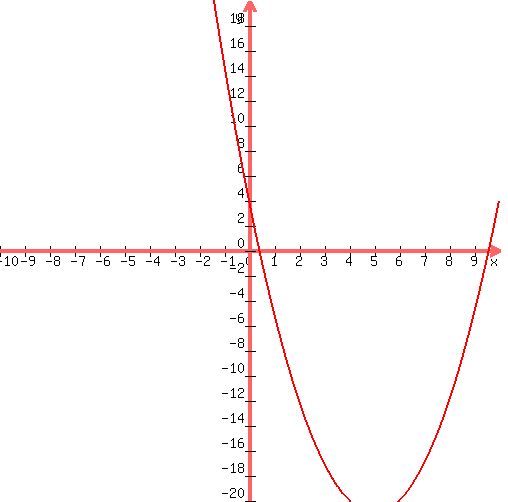|
Question 1145783: A model rocket is launched with an initial an initial upward velocity of 50 m/s. The rockets height “h” (in meters) after “t” seconds is given by the following.
H=50t-5t squared
Find all values of “t” for which the rockets height is 20 meters
Round your answer to the nearest hundredth
This was my answer? I just want to make sure it’s right!
Answer:3.25, 3.94
Answer by Alan3354(69443)   (Show Source): (Show Source):
You can put this solution on YOUR website! A model rocket is launched with an initial an initial upward velocity of 50 m/s. The rockets height “h” (in meters) after “t” seconds is given by the following.
H=50t-5t squared
Find all values of “t” for which the rockets height is 20 meters
-------
H=50t-5t^2 = 20
t^2 - 10t + 4 = 0
| Solved by pluggable solver: SOLVE quadratic equation (work shown, graph etc) |
Quadratic equation  (in our case (in our case  ) has the following solutons: ) has the following solutons:

For these solutions to exist, the discriminant  should not be a negative number. should not be a negative number.
First, we need to compute the discriminant  : :  . .
Discriminant d=84 is greater than zero. That means that there are two solutions:  . .


Quadratic expression  can be factored: can be factored:

Again, the answer is: 9.58257569495584, 0.41742430504416.
Here's your graph:
 |
==================
This is more descriptive:
-5t^2 + 50t - 20 = 0
| Solved by pluggable solver: SOLVE quadratic equation (work shown, graph etc) |
Quadratic equation  (in our case (in our case  ) has the following solutons: ) has the following solutons:

For these solutions to exist, the discriminant  should not be a negative number. should not be a negative number.
First, we need to compute the discriminant  : :  . .
Discriminant d=2100 is greater than zero. That means that there are two solutions:  . .


Quadratic expression  can be factored: can be factored:

Again, the answer is: 0.41742430504416, 9.58257569495584.
Here's your graph:
 |
=========================================================
Round your answer to the nearest hundredth
This was my answer? I just want to make sure it’s right!
Answer:3.25, 3.94
-------------------
It might be instructive to see how you got your answers.
|
|
|
| |